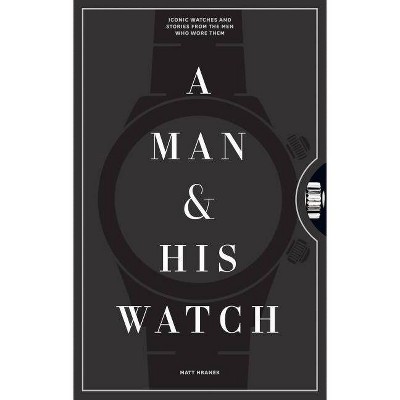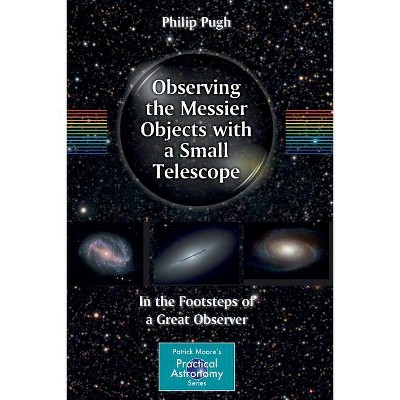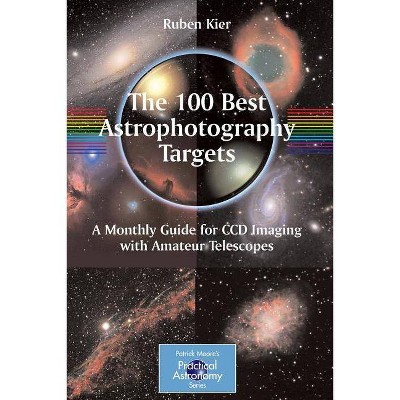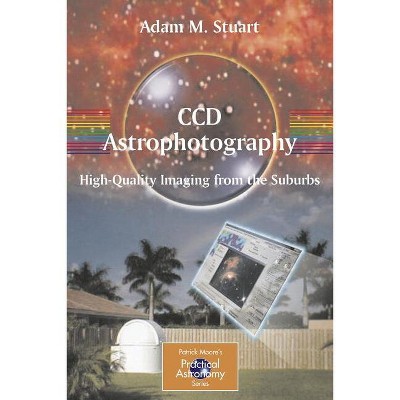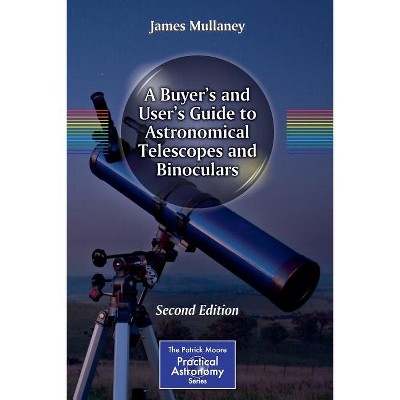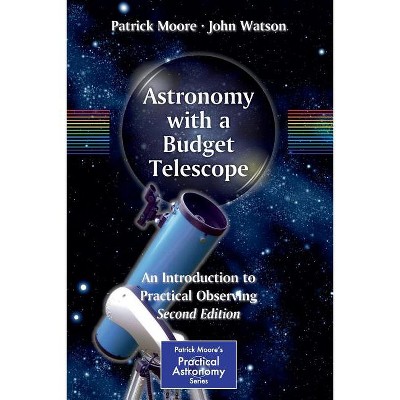How to Photograph the Moon and Planets with Your Digital Camera - (Patrick Moore Practical Astronomy) 2nd Edition by Tony Buick & Philip Pugh

About this item
Highlights
- Although astronomical CCD cameras can be very costly, digital cameras - the kind you use on holiday - on the other hand, are relatively inexpensive.
- About the Author: Although Tony Buick in his career worked in medical, veterinary, and agricultural science, specializing in analytical chemistry, he turned to his lifelong interest in astronomy following an early retirement and has encouraged the younger generation to observe and understand the sky while teaching science, computing, and geography.
- 346 Pages
- Photography, Techniques
- Series Name: Patrick Moore Practical Astronomy
Description
About the Book
Fully updated and revised, this volume reveals techniques to photograph space with a digital camera. New technological developments are included, and the text has been expanded to cover H-alpha light, photographing constellations and basic post-imaging processing.Book Synopsis
Although astronomical CCD cameras can be very costly, digital cameras - the kind you use on holiday - on the other hand, are relatively inexpensive. Moreover, their technology - especially thermal noise, sensitivity (ISO number) and resolution - has progressed to a point where such cameras are more than capable of photographing the brighter astronomical objects.
Now Tony Buick has teamed up with fellow author and astro imager Phil Pugh, to produce a completely revised, updated, and extended second edition to How to Photograph the Moon and Planets with your Digital Camera, first published in 2006. The revisions take into account changing (and improving) camera technology, and some items which are now available commercially but which previously had to be home-made. The section of solar observing has been expanded to include observing by H-alpha light, and among the many additional sections are photographing the constellations, aurorae, and basic post-imaging processing.
From the Back Cover
Although our Moon and the planets have not changed much in the five years since the first edition of this book was published, the technology allowing you to photograph them has changed dramatically. And the costs for equipment have come down significantly, opening all kinds of possibilities to the amateur and practical astronomer. With this practical guide to taking quality shots in your own backyard, with all the light pollution found in cities and towns today and using only very basic equipment, you will be amazed at what you can accomplish. Whether you want to dazzle friends or contribute to the scientific understanding of a particular body, whether you are a fan of solar photography or craters on the Moon, the rings of Saturn, or the bands of clouds that color Jupiter, in this book you will find help and support, and clear explanations of how best to proceed. This is a hobby you can stay with for a lifetime and keep on improving. You can get fancier equipment or just learn how to better post process your snaps. Either way, you can benefit from the knowledge and experience the authors of this book share. Don't waste more time wishing you could capture the beauty found in the heavens! Read how, and get started now!Review Quotes
On the first edition (2006): Buick, an experienced amateur astronomer, uses his own images... to illustrate a variety of equipment... [N]ovice imagers can rest assured that the images here are what the beginner can realistically expect to achieve... I enjoyed this book, and learned from it too. --Peter Grego, in Popular Astronomy, July-September 2006 The color images he has produced - there are over 300 of them in the book - are of breathtaking quality. His book is more than a manual of techniques (including details of how to make a low-cost DIY camera mount) and examples; it also provides a concise photographic atlas of the whole of the nearside of the Moon - with every image made using a standard digital camera - and describes the various lunar features, including the sites of manned and robotic landings. --eBook30.com
About the Author
Although Tony Buick in his career worked in medical, veterinary, and agricultural science, specializing in analytical chemistry, he turned to his lifelong interest in astronomy following an early retirement and has encouraged the younger generation to observe and understand the sky while teaching science, computing, and geography. His fascination with the Moon was given a further boost through his friendship with Sir Patrick Moore, which led to the publication of the first edition of How to Photograph the Moon and Planets with your Digital Camera. Buick has a wide range of interests, from the 'infinitesimal' under a microscope to the 'infinite' through a telescope and has published articles on tardigrades, the robust microscopic animals that can even survive for a while in space, in addition to articles on the Moon. His latest book for Springer, The Rainbow Sky, published in 2009, is a product of Buick's interest in spectroscopy and color in general throughout the universe. Philip Pugh is a technical instructor in telecommunications. He was born in England and became interested in astronomy at age six, using his first telescope at the age of 9. However, by the age of 14, he had reached the limit of what could be done with a modest instrument. Philip majored in mathematics and worked as a computer programmer. Competitive chess and bridge had replaced astronomy as a hobby, and it was through fishing that he first became a published writer, in 1980, with a spoof about fishing for minnows. As his expertise in work improved, he started writing for computing magazines, culminating in a twelve-part series for a magazine. He married in 1989 and had a daughter in 1990. It was a view of Venus and trip to an observatory in New Zealand that rekindled his interest in astronomy, and in 1995, he was given a pair of binoculars for his 40th birthday. He was soon learning his way around the easier deep sky objects and following the moons of Jupiter. A small telescopefollowed in 1997 and a portable one in 1999. It seemed only natural that he would write about astronomy, and the articles soon began to flow. It was the Coronado Personal Solar Telescope that his wife and daughter presented him for his 50th birthday that led to his first book, Observing the Sun with Coronado Telescopes. Philip has experimented extensively with compact digital cameras. He has also researched the Messier objects. Philip no longer competes in chess or bridge and has not been fishing for a few years, but he now has the opportunity to view the sky from many different places. His interest in astrophotography spawned an interest in general photography, and he has collected many "tourist" shots from around the world.Shipping details
Return details
Trending Art, Photography & Design Books




